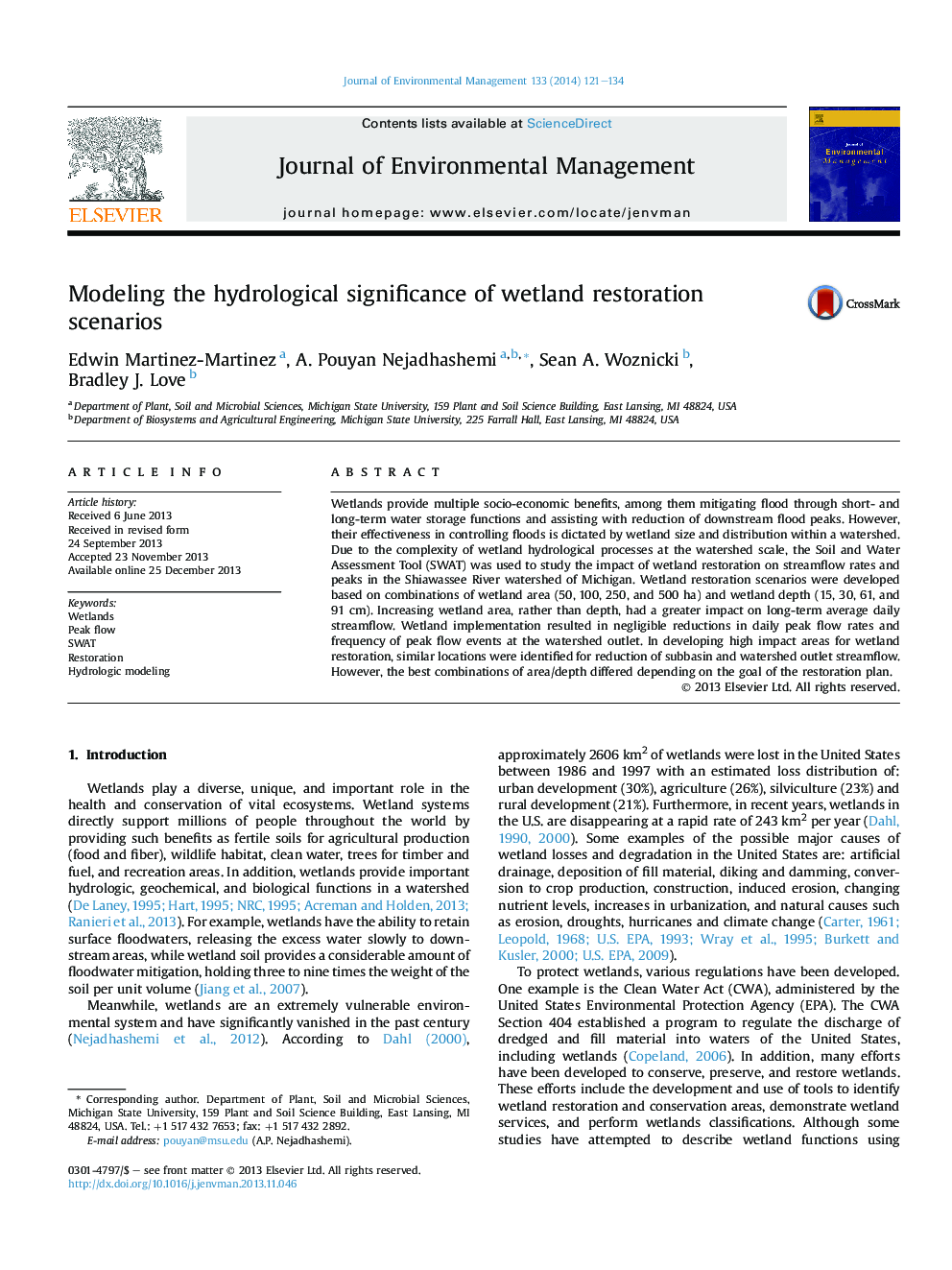| Article ID | Journal | Published Year | Pages | File Type |
|---|---|---|---|---|
| 1055832 | Journal of Environmental Management | 2014 | 14 Pages |
•Sixteen restoration scenarios were developed based on different wetland areas & depths.•Increasing wetland area, rather than depth, had a greater impact on annual streamflow.•This study can help decision-making for watershed-scale land use planning.
Wetlands provide multiple socio-economic benefits, among them mitigating flood through short- and long-term water storage functions and assisting with reduction of downstream flood peaks. However, their effectiveness in controlling floods is dictated by wetland size and distribution within a watershed. Due to the complexity of wetland hydrological processes at the watershed scale, the Soil and Water Assessment Tool (SWAT) was used to study the impact of wetland restoration on streamflow rates and peaks in the Shiawassee River watershed of Michigan. Wetland restoration scenarios were developed based on combinations of wetland area (50, 100, 250, and 500 ha) and wetland depth (15, 30, 61, and 91 cm). Increasing wetland area, rather than depth, had a greater impact on long-term average daily streamflow. Wetland implementation resulted in negligible reductions in daily peak flow rates and frequency of peak flow events at the watershed outlet. In developing high impact areas for wetland restoration, similar locations were identified for reduction of subbasin and watershed outlet streamflow. However, the best combinations of area/depth differed depending on the goal of the restoration plan.
